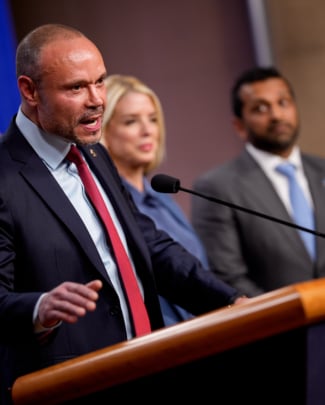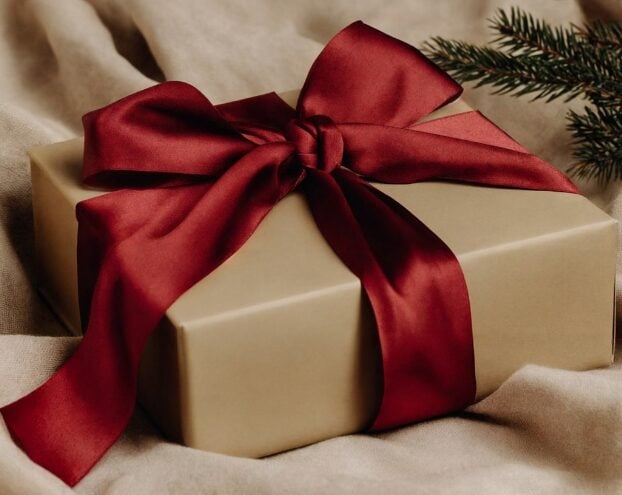REOPENINGS EXPOSE RED STATE/BLUE STATE DIVIDE
TIKTOK FINED FOR COLLECTING PERSONAL DATA ON MINORS
HOW MANY PLANNED PARENTHOODS HAVE CLOSED DURING COVID?
INTERCESSOR SHARES A DREAM–WHAT ARE YOU HEARING?
DEMS CAN TAKE SENATE BY FLIPPING ONLY 3 OR 4 SEATS
REOPENINGS EXPOSE RED STATE/BLUE STATE DIVIDE
Republican governors in the Sun Belt are aggressively pushing to reopen from the coronavirus shutdown, expressing optimism they can manage the threat, while coastal Democrats are far more pessimistic — creating the ultimate red state-blue state divide.
It’s what the country’s founders envisioned for such a large and disparate nation, with states experimenting and tailoring their policies to their own circumstances, though it’s also leaving those GOP governors to weather a storm of criticism from those who want the country to hang together.
In Georgia, Gov. Brian Kemp has announced plans to reopen some businesses like hair salons and gyms at the end of this week, with restaurants and theaters to follow next week. South Carolina Gov. Henry McMaster ruled public beaches can reopen on local say-so, and will allow retailers to start operations if they maintain proper social distancing and limit capacity. Same with Tennessee Gov. Bill Lee.
None of the governors is predicting business as usual — schools, for example, remain closed. But all of the governors said they see ways to get more people working without jeopardizing the progress made on stopping spread of COVID-19.
Florida Gov. Ron DeSantis said Tuesday the Southeasterners are all sharing ideas — though he pointed out his state “is about five states in and of itself.”
“We’re going to work regionally but I also got to work regionally within my own state to make sure we thread the needle properly,” he told “Fox and Friends.”
On the other side of the country, the coastal Democrat-led states are also banding together on what they see as a much slower timeline.
Even with the indicators of COVID-19 falling in his state, California Gov. Gavin Newsom said he’s not ready to say they’ve turned the corner, and he said high-volume public events like baseball games are a long way off.
“If we all pull back, we could see a second wave that makes this pale in comparison. I can’t say that,” he said. “We’re not seeing yet [the] significant decline that we need to see ultimately to toggle back.”
Complicating the red-vs.-blue picture, though, is Gov. Jared Polis in Colorado. The Democrat announced he will not renew the state’s shelter-in-place order when it runs out next week.
That will allow retailers to restart — though only for curbside pickup, and all employees must wear masks. Mr. Polis called his policy a transition from staying at home to being “safer at home.”
“What we have to think about — this is what’s really important — is what is sustainable behavior in June, in July, in August, because this doesn’t end,” he told CNN’s “Inside Politics” program on Tuesday. “And so how can people support themselves, earn their livelihood, be able to have some fulfillment in their lives but have significant social distancing that really reduces the spread of the virus sustainably?”
Every state is making that same risk-reward calculation, just as they did a month ago, when most governors rushed to issue stay-at-home policies, not wanting to be labeled holdouts amid predictions of mass-level deaths.
Now, with the death toll well short of those disastrous predictions, some governors say the bigger risk has become economic catastrophe.
President Trump said Tuesday that 20 states accounting for 40% of the country’s population have announced plans for some reopening.
Stephen Moore, an advisor to Mr. Trump, said the states that are pushing to reopen will put pressure on the others to follow.
“You’re going to start to see over the course of the next six weeks or so a kind of red state-blue state divide in the United States where red states are going to open up at a much faster pace than blue states and that’s going to have really interesting ramifications,” Mr. Moore said on Fox Business Network.
Mr. Moore is one of about 200 industry leaders and experts the White House tapped to advise the administration on reopening the economy. He said he spoke to a manufacturer in Wisconsin recently who said the business would close if it can’t reopen in the next 3-4 weeks.
“‘If I see Arizona or Texas opening up and Wisconsin’s closed, guess what? I’m hauling everything into a U-Haul and we’re going to these other states,’” Mr. Moore recounted. “So there’s going to be a lot of pressure on some of these blue states to open up as they see the red states taking the lead.”
The state-by-state approach has been disappointing to some Democrats on Capitol Hill who had pushed Mr. Trump for a national shutdown policy.
The president initially ridiculed those calls, saying they would violate the Constitution — though more recently he has insisted he has the ultimate power to compel states on opening or closing.
Legal scholars have disputed that latter claim.
On Tuesday, Attorney General William P. Barr said having the decision-making in the hands of governors is federalism at work.
“What’s the alternative? Is the alternative to have one decision made by one person in Washington for the whole nation? That is a very high-stakes way to proceed, because more frequently than not, governments get things wrong,” he said in an interview with radio-show host Hugh Hewitt. “It may be a little bit messier, but I think it’s better to allow our federal system to operate.”
Mr. Barr also signaled, though, that there’s likely a tipping point when stay-at-home orders become too onerous. He said they are “disturbingly close to house arrest,” and while they may have been justified at the beginning, and “might still be justified” in some places, it’s fraught with risks to constitutional rights.
“We adopted them, we have to remember, for the limited purpose of slowing down the spread, that is — bending the curve. We didn’t adopt them as the comprehensive way of dealing with this disease,” he said. “And we are now seeing that these are bending the curve, and now we have to come up with more targeted approaches.”
Governors across the country are pondering what that targeted approach might be — while promising they will be guided by doctors and science.
Alabama Gov. Kay Ivey, one of the southeastern governors mentioned by Mr. DeSantis, said her state’s stay-at-home order would last at least through its planned expiration date of April 30.
“I am as eager as anybody to get our economy back open spinning on all cylinders again,” she said. “But again, we have to be careful and cautious in what we are doing and do it in a smart, productive way.” . . .
(Excerpt from The Washington Times. Article by David Sherfinski and Stephen Dinan.)
Partner with Us
Intercessors for America is the trusted resource for millions of people across the United States committed to praying for our nation. If you have benefited from IFA's resources and community, please consider joining us as a monthly support partner. As a 501(c)3 organization, it's through your support that all this possible.


We use cookies to ensure that we give you the best experience on our website. If you continue to use this site we will assume that you are happy with it. Privacy Policy




Comments
This is a highly informative factual data link everyone should watch to understand the real science around Covid-19. Press briefing by 2 emergency room doctors who have “boots on the ground.” FACTS NOT FEAR
https://www.youtube.com/watch?v=xfLVxx_lBLU
It was appropriate to have stay at home orders. But that is not sustainable over a long period of time. I pray for each state, each governor for wisdom in this matter. It is good that President Trump has left this decision to each governor